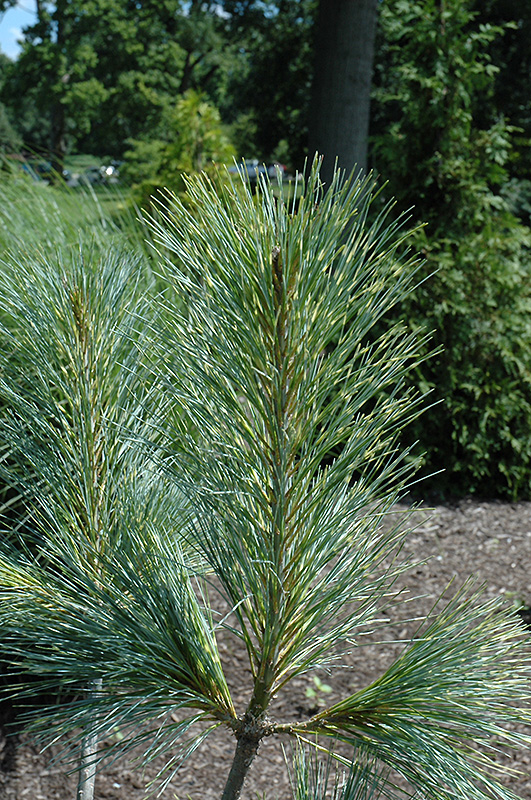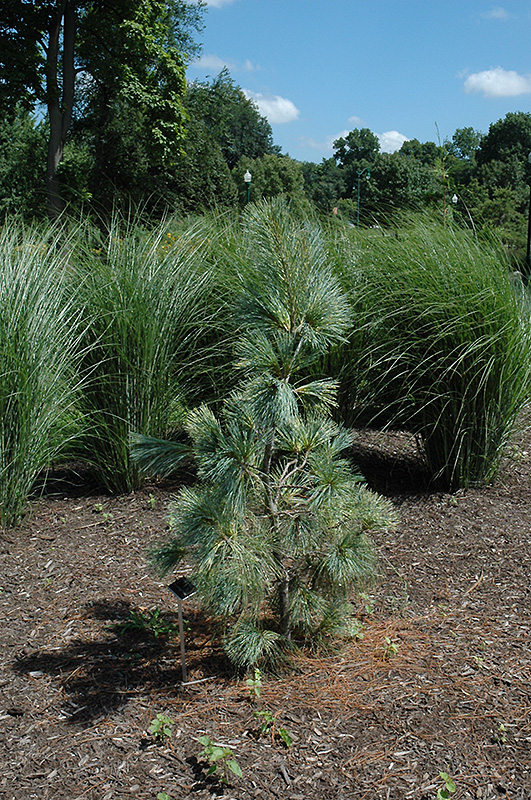>> Home
Zebrina Himalayan Pine
Pinus wallichiana 'Zebrina'
Height: 30 feet
Spread: 20 feet
Sunlight:
![]()
Hardiness Zone: 4b
Other Names: Bhutan Pine, Blue Pine
Description:
One of the most beautiful evergreens, with long soft silver-blue needles that are banded in pale yellow; this variety has a bright soft-textured appearance; broadly spreading and low branched, a stunning accent tree; needs shelter from winter winds
Ornamental Features
Zebrina Himalayan Pine is primarily valued in the landscape for its distinctively pyramidal habit of growth. It has attractive yellow-variegated silvery blue foliage. The needles are highly ornamental and remain silvery blue throughout the winter.
Landscape Attributes
Zebrina Himalayan Pine is a dense evergreen tree with a strong central leader and a distinctive and refined pyramidal form. Its relatively fine texture sets it apart from other landscape plants with less refined foliage.
This is a relatively low maintenance tree. When pruning is necessary, it is recommended to only trim back the new growth of the current season, other than to remove any dieback. It has no significant negative characteristics.
Zebrina Himalayan Pine is recommended for the following landscape applications;
- Accent
Planting & Growing
Zebrina Himalayan Pine will grow to be about 30 feet tall at maturity, with a spread of 20 feet. It has a low canopy with a typical clearance of 2 feet from the ground, and should not be planted underneath power lines. It grows at a slow rate, and under ideal conditions can be expected to live for 70 years or more.
This tree should only be grown in full sunlight. It is very adaptable to both dry and moist growing conditions, but will not tolerate any standing water. It is not particular as to soil type, but has a definite preference for acidic soils. It is somewhat tolerant of urban pollution, and will benefit from being planted in a relatively sheltered location. This is a selected variety of a species not originally from North America.

